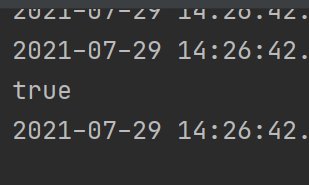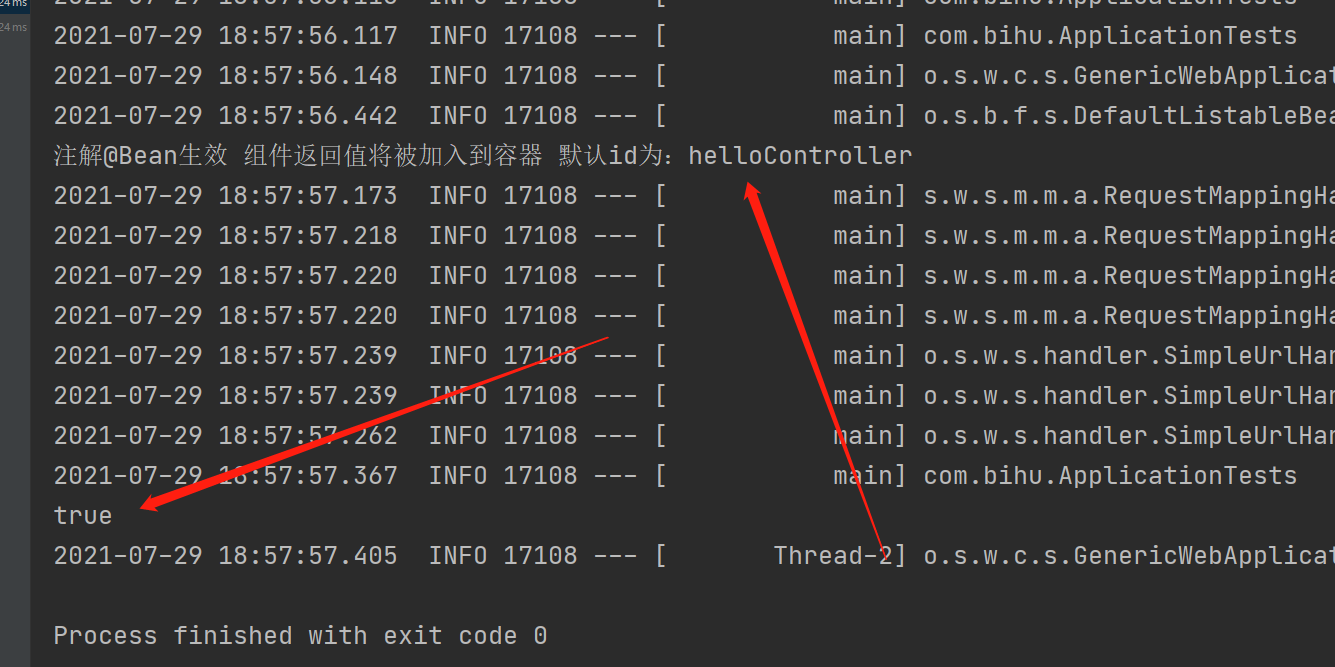@PropertySource 、 @ImportResource 、@Bean 三个注解讲解:
@PropertySource
之前4-1、4-2、4-3 做实验的时候 ,把配置数据都写在了SpringBoot的根配置文件上,是全局的,那这样肯定是不行的,如果写很多个yml文件或properties文件也会很乱,也可能会重复。
@PropertySource:加载指定的配置文件;
新建一个s1.properties 文件

person.last-name=BiHu
person.age=18
person.boss=false
person.birth=2025/10/10
person.maps.k1=value1
person.maps.k2=value2
person.lists=v1,v2,v3,v4
person.dog.name=小勾勾
person.dog.age=2
然后JavaBean中指定用某个配置文件:
package com.bihu.Bean;
import org.hibernate.validator.constraints.Email;
import org.springframework.beans.factory.annotation.Value;
import org.springframework.boot.context.properties.ConfigurationProperties;
import org.springframework.context.annotation.PropertySource;
import org.springframework.stereotype.Component;
import java.util.Date;
import java.util.List;
import java.util.Map;
@PropertySource("classpath:s1.properties") //这个类 指定用这个配置文件【classpath 这个不多说了】
@Component
@ConfigurationProperties(prefix = "person")
public class JavaBean {
private String lastName;
private Integer age;
private Boolean boss;
private Date birth;
private Map<String,Object> maps;
private List<Object> lists;
private Dog dog;
@Override
public String toString() {
return "Person{" +
"lastName='" + lastName + '\'' +
", age=" + age +
", boss=" + boss +
", birth=" + birth +
", maps=" + maps +
", lists=" + lists +
", dog=" + dog +
'}';
}
public String getLastName() {
return lastName;
}
public void setLastName(String lastName) {
this.lastName = lastName;
}
public Integer getAge() {
return age;
}
public void setAge(Integer age) {
this.age = age;
}
public Boolean getBoss() {
return boss;
}
public void setBoss(Boolean boss) {
this.boss = boss;
}
public Date getBirth() {
return birth;
}
public void setBirth(Date birth) {
this.birth = birth;
}
public Map<String, Object> getMaps() {
return maps;
}
public void setMaps(Map<String, Object> maps) {
this.maps = maps;
}
public List<Object> getLists() {
return lists;
}
public void setLists(List<Object> lists) {
this.lists = lists;
}
public Dog getDog() {
return dog;
}
public void setDog(Dog dog) {
this.dog = dog;
}
}
可以看到 里面指定了用 classpath 目录下的s1.properties [classpath 是什么 自己去百度]
注意事项: 如果你SpringBoot 配置 也有一样的 Person 数据,那么因为权限大范围大 所以无论是否指定配置文件 都用SpringBoot的,但一般不会那样做。一般SpringBoot配置文件都是配SpringBoot自己。
有了这个注解 除了SpringBoot配置文件,其他的配置文件你都不用担心 "名字" 冲突。

就算s1 和 s2 一样的配置都是 Person 都不怕,因为指定了用s1。
完整写法: @PropertySource(value = {"classpath:xxx.properties"})
@ImportResource:
@ImportResource:导入Spring的配置文件,让配置文件里面的内容生效;
因为 Spring Boot里面没有Spring的配置文件,我们自己编写的配置文件,也不能自动识别; 想让Spring的配置文件生效,加载进来 就在主配置类上用这个注解,相当于导入了Spring配置文件xml
主配置类其实就是那个入口函数。
测试: 新建一个Spring配置文件 => 在主配置类 Application.java 使用@ImportResource注解 => 用SpringBoot单元测试 测试配置文件是否存在Bean:

<?xml version="1.0" encoding="UTF-8"?>
<beans xmlns="http://www.springframework.org/schema/beans"
xmlns:xsi="http://www.w3.org/2001/XMLSchema-instance"
xsi:schemaLocation="http://www.springframework.org/schema/beans http://www.springframework.org/schema/beans/spring-beans.xsd">
<!-- 创建Bean s1 -->
<bean id="s1" class="com.bihu.Bean.JavaBean"></bean>
</beans>
主配置类 Application.java:
package com.bihu;
import org.springframework.boot.SpringApplication;
import org.springframework.boot.autoconfigure.SpringBootApplication;
import org.springframework.context.annotation.ImportResource;
@ImportResource(locations = {"classpath:SpringApplication.xml"}) //导入Spring配置文件,可以导入多个【注意属性是locations】
@SpringBootApplication
public class Application {
public static void main(String[] args) {
SpringApplication.run(Application.class, args);
}
}
Test.java :测试类:
package com.bihu;
import com.bihu.Bean.JavaBean;
import org.junit.Test;
import org.junit.runner.RunWith;
import org.springframework.beans.factory.annotation.Autowired;
import org.springframework.boot.test.context.SpringBootTest;
import org.springframework.context.ApplicationContext;
import org.springframework.test.context.junit4.SpringRunner;
@RunWith(SpringRunner.class)
@SpringBootTest
public class ApplicationTests {
//测试Bean
@Autowired
ApplicationContext ioc;
@Test
public void contextLoads() {
//如果主配置类未导入@ImportResource注解,那么会显示false
System.out.println(ioc.containsBean("s1")); //查看Spring配置文件是否存在Bean : s1
}
}

运行可以发现 是teue,所以说 ,Spring配置可以导入多个,但如果不用@ImportSource 相当于没有,其次注意不是Value属性 是 locations 属性!
我们都是SpringBoot 了 ,怎么可能还用那种?退化? 我们要用全注解方式:
SpringBoot推荐给容器中添加组件的方式;推荐使用全注解的方式
配置文件 = 配置类 所以我们用配置类!
1、@Configuration : 指明一个类是 配置类,用来替代Spring配置文件。
2、使用@Bean给容器中添加组件
其中:配置类中方法名相当于组件默认ID,返回的值会添加到容器中。
新建一个配置类:
package com.bihu.config;
import com.bihu.Contorller.HelloController;
import org.springframework.context.annotation.Bean;
import org.springframework.context.annotation.Configuration;
@Configuration //指明当前类是 配置类,用来替代Spring配置文件
public class MyAppConfig {
@Bean //将方法的返回值添加到容器中;容器中这个组件默认的id就是方法名
public HelloController helloController(){
System.out.println("注解@Bean生效 组件返回值将被加入到容器 默认id为:helloController");
return new HelloController();
}
}
然后在测试文件测试 看下 helloController 组件是否被加入到容器:
package com.bihu;
import org.junit.Test;
import org.junit.runner.RunWith;
import org.springframework.beans.factory.annotation.Autowired;
import org.springframework.boot.test.context.SpringBootTest;
import org.springframework.context.ApplicationContext;
import org.springframework.test.context.junit4.SpringRunner;
@RunWith(SpringRunner.class)
@SpringBootTest
public class ApplicationTests {
@Autowired
ApplicationContext ioc;
@Test
public void contextLoads() {
System.out.println(ioc.containsBean("helloController"));
}
}
运行结果:

所以我们用配置类就好了 他制动会执行加入的。。。其他的你也要懂。





















 783
783











 被折叠的 条评论
为什么被折叠?
被折叠的 条评论
为什么被折叠?








